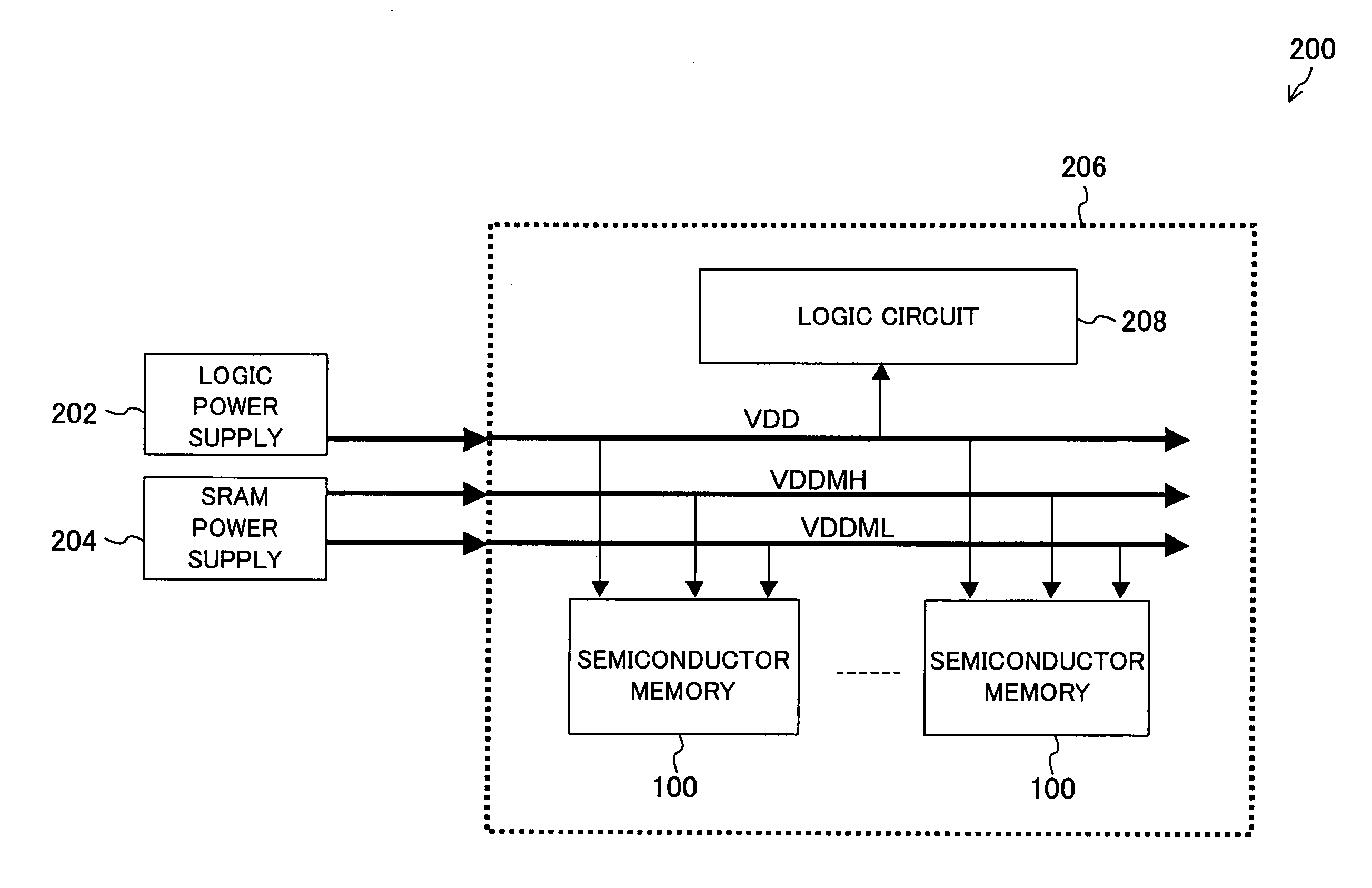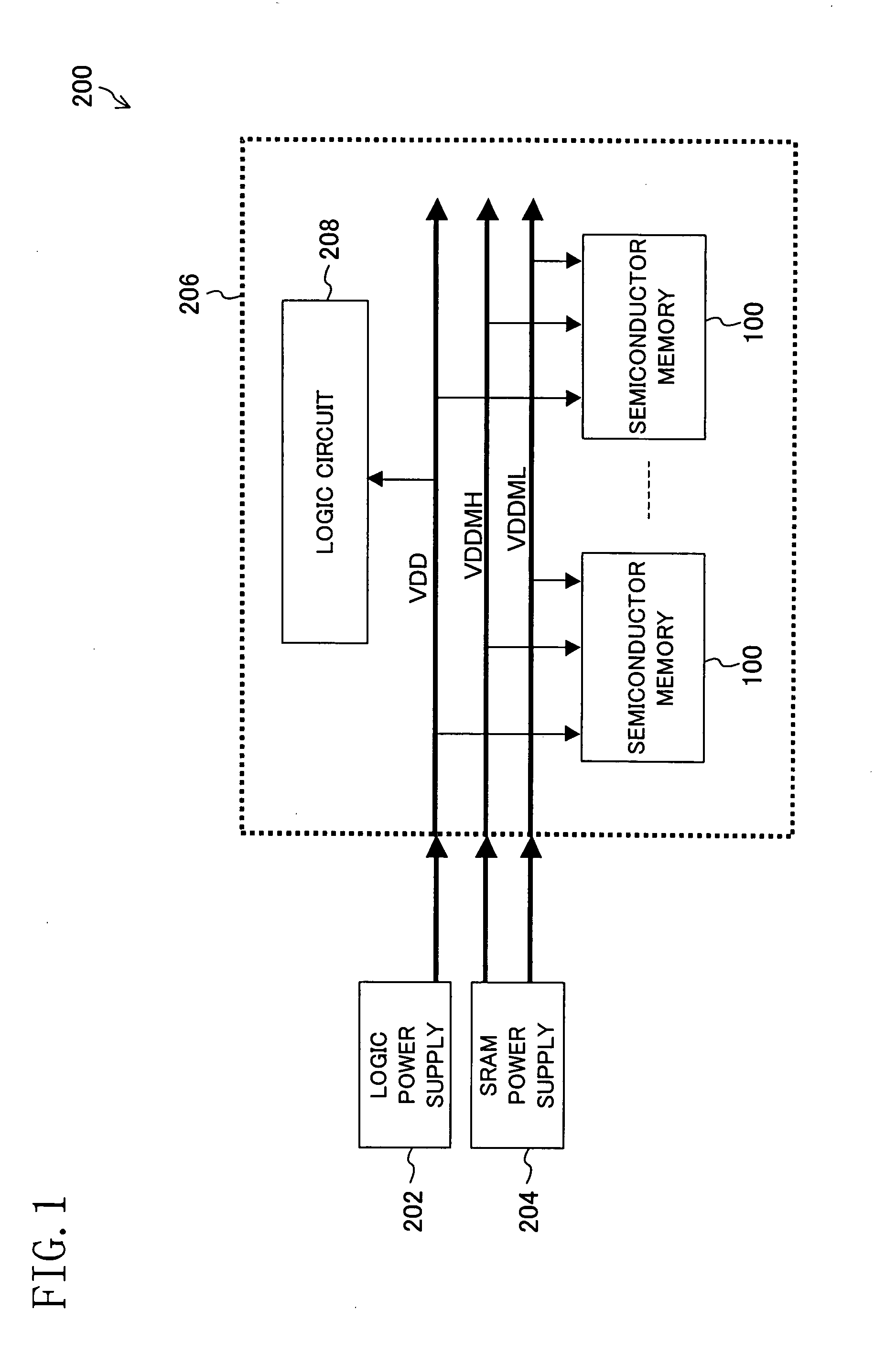Semiconductor memory
- Summary
- Abstract
- Description
- Claims
- Application Information
AI Technical Summary
Benefits of technology
Problems solved by technology
Method used
Image
Examples
embodiment 1
[0030]FIG. 1 is a block diagram showing a structure of a semiconductor circuit system 200 which has a semiconductor memory according to embodiment 1 of the present invention. The semiconductor circuit system 200 includes a power supply for a logic circuit (logic power supply 202), a power supply for SRAM (SRAM power supply 204), and an LSI (large-scale integration) 206. The LSI 206 includes a plurality of semiconductor memories 100 and a logic circuit 208.
[0031] The logic power supply 202 generates supply potential VDD which is supplied to the plurality of semiconductor memories 100 and the logic circuit 208. The SRAM power supply 204 generates high-data retaining supply potentials VDDMH and VDDML for retaining high data in memory cells, which are supplied to the plurality of semiconductor memories 100. High-data retaining supply potential VDDMH is higher than supply potential VDD. High-data retaining supply potential VDDML is lower than supply potential VDD.
[0032]FIG. 2 is a circ...
embodiment 2
[0074]FIG. 4 is a block diagram showing a structure of a semiconductor circuit system 400 which has a semiconductor memory according to embodiment 2 of the present invention. The semiconductor circuit system 400 includes a power supply for a logic circuit (logic power supply 202), a power supply for SRAM (SRAM power supply 404), and an LSI 406. The LSI 406 includes a plurality of semiconductor memories 300 and a logic circuit 208.
[0075] The logic power supply 202 generates supply potential VDD which is supplied to the plurality of semiconductor memories 300 and the logic circuit 208. The SRAM power supply 404 generates high-data retaining supply potential VDDMH which is supplied to the plurality of semiconductor memories 300. High-data retaining supply potential VDDMH is higher than supply potential VDD.
[0076]FIG. 5 is a circuit diagram showing a structure of a semiconductor memory 300 according to embodiment 2 of the present invention. The semiconductor memory 300 has substantial...
PUM
 Login to View More
Login to View More Abstract
Description
Claims
Application Information
 Login to View More
Login to View More - R&D
- Intellectual Property
- Life Sciences
- Materials
- Tech Scout
- Unparalleled Data Quality
- Higher Quality Content
- 60% Fewer Hallucinations
Browse by: Latest US Patents, China's latest patents, Technical Efficacy Thesaurus, Application Domain, Technology Topic, Popular Technical Reports.
© 2025 PatSnap. All rights reserved.Legal|Privacy policy|Modern Slavery Act Transparency Statement|Sitemap|About US| Contact US: help@patsnap.com



